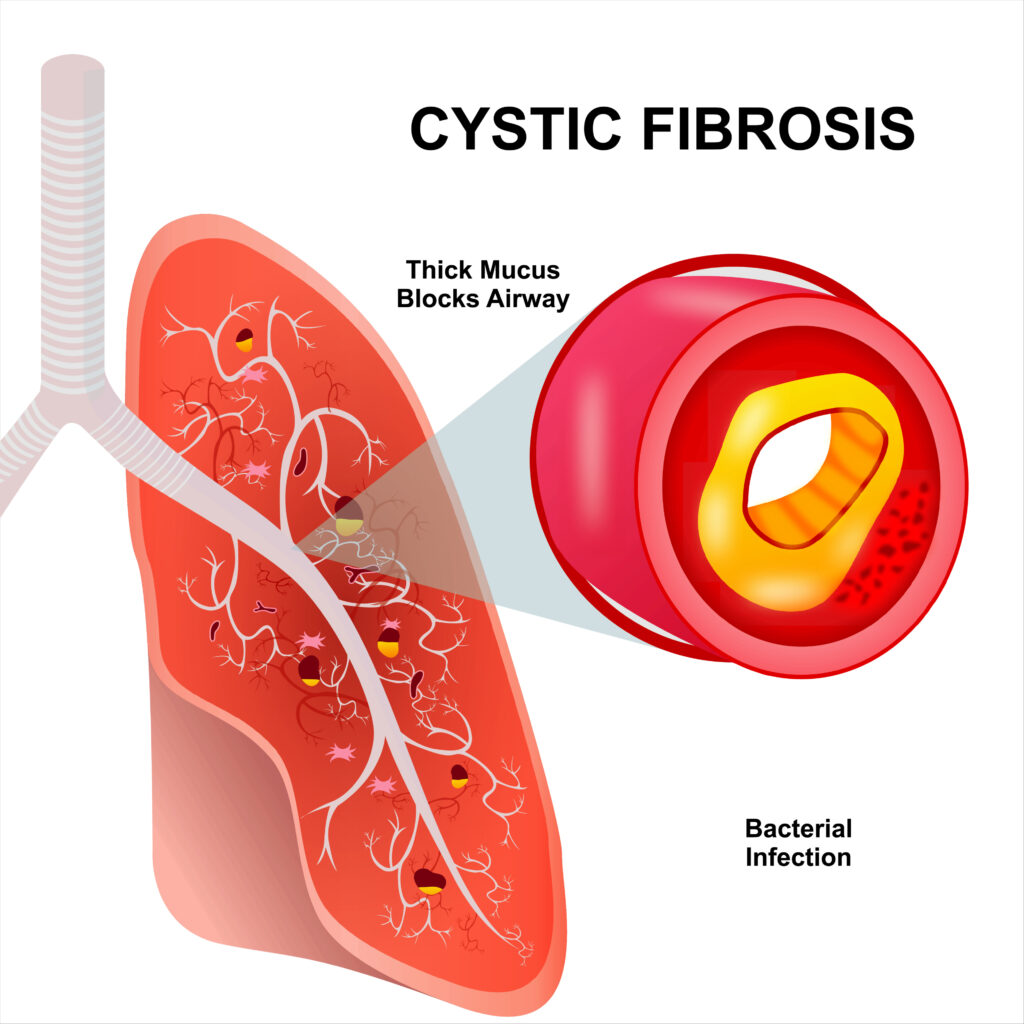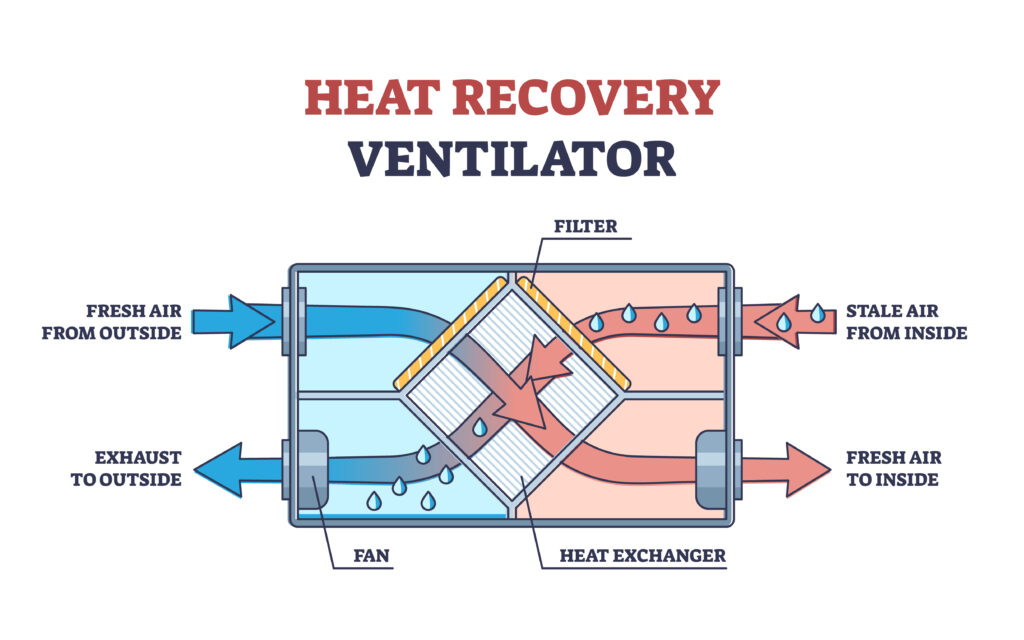Indoor air quality (IAQ) is a vital aspect of maintaining good health, particularly for individuals with chronic respiratory conditions such as fibrosis. Pulmonary fibrosis is a progressive disease that causes lung tissue to become damaged and scarred, leading to severe breathing difficulties. Given the sensitivity of individuals with fibrosis to airborne pollutants, maintaining high indoor air quality is crucial. This blog explores the impact of poor indoor air quality on those with fibrosis, the importance of regular air quality testing, and effective strategies for improving IAQ.

Understanding Pulmonary Fibrosis
Pulmonary fibrosis is a condition characterized by the thickening and scarring (fibrosis) of the lung tissue. This scarring results in stiffness in the lungs, making it increasingly difficult for oxygen to pass into the bloodstream. Symptoms of pulmonary fibrosis include:
- Shortness of breath
- Chronic dry cough
- Fatigue and weakness
- Chest discomfort
- Loss of appetite and weight loss
The exact cause of pulmonary fibrosis can be unknown (idiopathic), or it can be triggered by environmental factors, infections, medications, or other diseases .
The Impact of Poor Indoor Air Quality on Fibrosis
For individuals with pulmonary fibrosis, maintaining clean and healthy air is essential. Poor indoor air quality can exacerbate symptoms, accelerate disease progression, and lead to severe health complications. Key pollutants that impact IAQ and their specific effects on pulmonary fibrosis include:
Particulate Matter (PM2.5 and PM10)
Particulate matter (PM) is a mixture of solid particles and liquid droplets found in the air. PM2.5 (particles with a diameter of 2.5 micrometers or smaller) and PM10 (particles with a diameter of 10 micrometers or smaller) can penetrate deep into the respiratory tract, causing inflammation and worsening lung function. Studies have shown that exposure to particulate matter is associated with increased hospital admissions and mortality in individuals with chronic respiratory diseases, including pulmonary fibrosis .
Volatile Organic Compounds (VOCs)
Volatile organic compounds (VOCs) are a group of chemicals that easily become vapors or gases. They are found in many household products, including paints, cleaning supplies, and air fresheners. VOCs can irritate the respiratory system and contribute to chronic inflammation, which is particularly harmful to individuals with pulmonary fibrosis. Common VOCs include benzene, formaldehyde, and toluene .

Mold and Microbial Volatile Organic Compounds (mVOCs)
Mold and its byproducts, known as microbial volatile organic compounds (mVOCs), can trigger allergic reactions and worsen respiratory conditions. Mold spores and mVOCs can lead to symptoms such as coughing, wheezing, and shortness of breath. For individuals with pulmonary fibrosis, exposure to mold can significantly impair lung function and overall health .
Radon and Other Gases
Radon is a radioactive gas that can seep into homes from the ground. It is a leading cause of lung cancer and poses a significant risk to individuals with compromised lung function, such as those with pulmonary fibrosis. Other harmful gases, like carbon monoxide, can also exacerbate respiratory issues and lead to serious health complications .
The Importance of Testing Indoor Air Quality
Regular testing of indoor air quality is essential to identify and mitigate the presence of harmful pollutants. Testing can help determine the concentration of various contaminants and guide necessary interventions to improve IAQ. Here are the key benefits of regular air quality testing:
Early Detection of Pollutants
Identifying harmful substances early allows for timely action to reduce exposure and prevent health deterioration. For individuals with pulmonary fibrosis, early detection of pollutants like particulate matter, VOCs, and mold can help manage symptoms and prevent disease progression .

Improved Health Outcomes
Maintaining clean air can help manage symptoms and improve the overall quality of life for those with fibrosis. By reducing exposure to harmful pollutants, individuals can experience fewer respiratory symptoms, less frequent hospital visits, and better overall health .
Informed Decision-Making
Data from air quality tests can guide decisions on implementing air purifiers, enhancing ventilation, and making lifestyle changes to reduce pollutant sources. This information is crucial for creating a safer and healthier living environment for individuals with pulmonary fibrosis .

Effective Strategies for Improving Indoor Air Quality
There are several strategies to improve indoor air quality and protect individuals with pulmonary fibrosis from harmful pollutants. These include:
Use of High-Efficiency Air Purifiers
High-quality air purifiers can effectively reduce indoor levels of particulate matter, VOCs, and other pollutants. When selecting an air purifier, consider the following features:
- Activated Carbon Filters: Air purifiers with activated carbon filters are highly effective at adsorbing VOCs and other gaseous pollutants. For maximum effectiveness, choose a unit with at least 15 pounds of activated carbon or an equivalent amount of high-capacity adsorbent material.
- HEPA Filters: High-efficiency particulate air (HEPA) filters are designed to capture particulate matter as small as 0.3 micrometers. This makes them highly effective at removing PM2.5 and PM10 from the air.
- Air Exchange Rate: Ensure the air purifier has an adequate air exchange rate (measured in cubic feet per minute, or CFM) for the size of the room. This ensures that the air is thoroughly cleaned multiple times per hour .
Enhancing Ventilation
Proper ventilation is crucial in reducing indoor concentrations of pollutants. Increasing the exchange of indoor and outdoor air helps dilute and remove these chemicals from the indoor environment. Here are some strategies to improve ventilation:
- Open Windows and Doors: Regularly opening windows and doors can significantly increase airflow and reduce the concentration of indoor pollutants.
- Use Exhaust Fans: Installing and using exhaust fans in kitchens, bathrooms, and laundry rooms can help remove contaminated air.
- Install a Mechanical Ventilation System: Systems such as heat recovery ventilators (HRVs) or energy recovery ventilators (ERVs) can provide continuous fresh air exchange while minimizing energy loss .
Controlling Humidity
Maintaining indoor humidity levels below 50% is essential to prevent mold growth and reduce the risk of respiratory issues. Use dehumidifiers in damp areas, such as basements, and fix any leaks or water damage promptly to control humidity .
Regular Cleaning
Keeping the living environment clean and free from dust, mold, and other allergens is crucial for maintaining good indoor air quality. Regularly vacuum carpets and upholstery using a vacuum with a HEPA filter, dust surfaces with a damp cloth, and wash bedding frequently .
Persistent Chemical Residues
One significant issue with chemicals like naphthalene, which is found in some mothballs and air fresheners, is their ability to absorb into building materials, fabrics, and other surfaces. This means that even after the source of the chemical is removed, residual naphthalene can continue to off-gas and be detected in the environment .
Strategies to Address Residual Contamination
- Thorough Cleaning: Clean all surfaces, fabrics, and ventilation systems to remove any residual chemicals.
- Sealing Surfaces: Applying sealants to porous surfaces, such as walls and floors, can help encapsulate any remaining contaminants and prevent them from off-gassing.
- Ongoing Air Purification: Continue using air purifiers to capture any residual VOCs that may still be present in the environment .
Special Considerations for Individuals with Multiple Chemical Sensitivity (MCS)
People with Multiple Chemical Sensitivity (MCS) often experience heightened reactions to even low levels of chemicals like naphthalene and VOCs. For these individuals, reducing chemical exposure is even more critical.
Recommendations for MCS Patients
- Strict Chemical Avoidance: Implement strict avoidance measures, removing all potential sources of VOCs and naphthalene from the living environment.
- Enhanced Ventilation and Air Purification: Use enhanced ventilation systems and high-capacity air purifiers with activated carbon and HEPA filters to maintain the cleanest possible air.
- Regular Health Monitoring: Regularly monitor health and air quality, adjusting mitigation strategies as needed to ensure the living environment remains safe and comfortable .
Conclusion

Ensuring high indoor air quality is crucial for the health and well-being of individuals with pulmonary fibrosis. Poor indoor air quality can exacerbate symptoms and accelerate disease progression. Regular air quality testing and proactive measures to reduce pollutants can significantly improve health outcomes for those affected by fibrosis. By using high-efficiency air purifiers, enhancing ventilation, and implementing strict cleaning practices, it is possible to create a safer and healthier living environment.
References
- American Lung Association. Pulmonary Fibrosis. Retrieved from American Lung Association.
- National Heart, Lung, and Blood Institute (NHLBI). Pulmonary Fibrosis. Retrieved from NHLBI.
- Environmental Protection Agency (EPA). Volatile Organic Compounds’ Impact on Indoor Air Quality. Retrieved from EPA VOCs.




